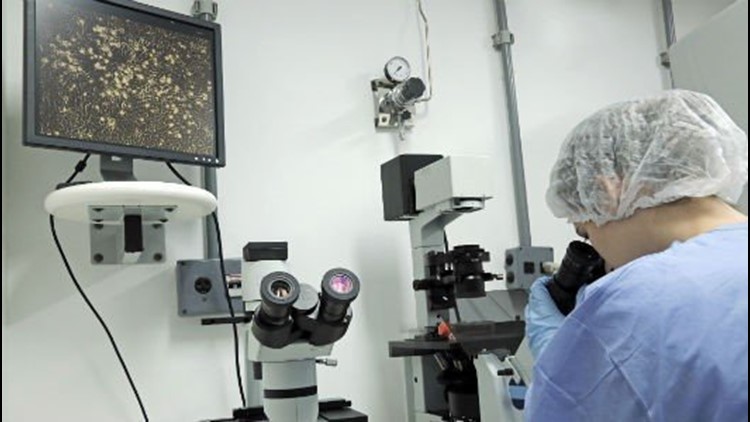A researcher at the University of Pittsburgh accidentally infected herself with the Zika virus while working in a lab, the university said.
The woman stuck herself with a needle May 23 while conducting an experiment with the virus. Nine days later, she began experiencing symptoms consistent with the virus, including a fever. They subsided, and she returned to work Monday. Two days later, the university received confirmation a test was positive for the mosquito-borne illness.
“On advice of the ACHD (Allegheny County Health Department), the researcher is complying with a request to wear long sleeves and pants and wear insect repellent for three weeks from the date of contact,” a university statement said Thursday.
Pennsylvania’s Allegheny County Health Department confirmed the woman no longer has symptoms and said she is doing well. In a statement, it called the case unique because the researcher had not traveled to an area where the virus is circulating and she was not infected through sexual transmission.
Nearly all of the infected individuals in the continental United States were infected while traveling to destinations where the virus is circulating. There are 11 confirmed cases of the virus among individuals who had not traveled to those places but whose sexual partners had.
The U.S. Centers for Disease Control and Prevention said health care workers who handle the virus are encouraged to “take precautions to prevent needle sticks or other exposures.”
“We want to remind residents that, despite this rare incident, there is still no current risk of contracting Zika from mosquitoes in Allegheny County,” Dr. Karen Hacker, the health department’s director, said in a statement. It was the fourth case of the virus in the Pennsylvania county.
Emergency response teams ready
CDC Director Tom Frieden said Thursday that emergency response teams are ready to be deployed when local transmission of the virus has been confirmed in the continental United States or Hawaii. These are groups of public health experts to help with the response during emergency situations.
Frieden offered the information while reviewing available resources for states during a video conference call with governors and local officials from nine states identified as most at risk for local transmission of the virus, according to a statement from the Department of Health and Human Services. Those states include Alabama, Arizona, California, Florida, Georgia, Hawaii, Louisiana, Mississippi and Texas.
Frieden discussed a federal Zika response plan, created with input from state and local officials, which outlines protocols for the initial response when local transmission occurs.
Also on the call, Health and Human Services Secretary Sylvia Burwell and Amy Pope, a deputy homeland security adviser, encouraged the states to prepare and prevent local transmission now before the summer mosquito season is fully underway.
Where are the Zika-carrying mosquitoes?
The mosquitoes spreading the virus are the female Aedes aegypti. On Thursday, CDC researchers and Colorado State University published a new map showing where this mosquito, which is also responsible for spreading other related viruses such as dengue fever and chikungunya, has been found in the United States.
The map combines information from counties about where the Aedes aegypti and Aedes albopictus mosquitoes have been found for two decades. The Aedes albopictus, known as the tiger mosquito, is found in similar areas and could also spread Zika.
“Between January 1995 and March 2016, 183 counties from 26 states and the District of Columbia reported the occurrence of Aedes aegypti, and 1,241 counties from 40 states and the District of Columbia reported the occurrence of Aedes albopictus,” said the study, which is published in the Journal of Medical Entomology.
However, the researchers noted that large outbreaks of the virus are unlikely in the continental United States. That’s based on the limited transmission seen from those other viruses, which is attributed to factors such as air conditioning and window screens.
The study said conditions would have to, “deteriorate to mimic those seen in previous centuries or if other modes of transmission for these viruses became more widespread.” The authors said their work “underscores the need for systematic surveillance” of these mosquitoes nationwide because not all counties collect this data or collect the data in the same way.



